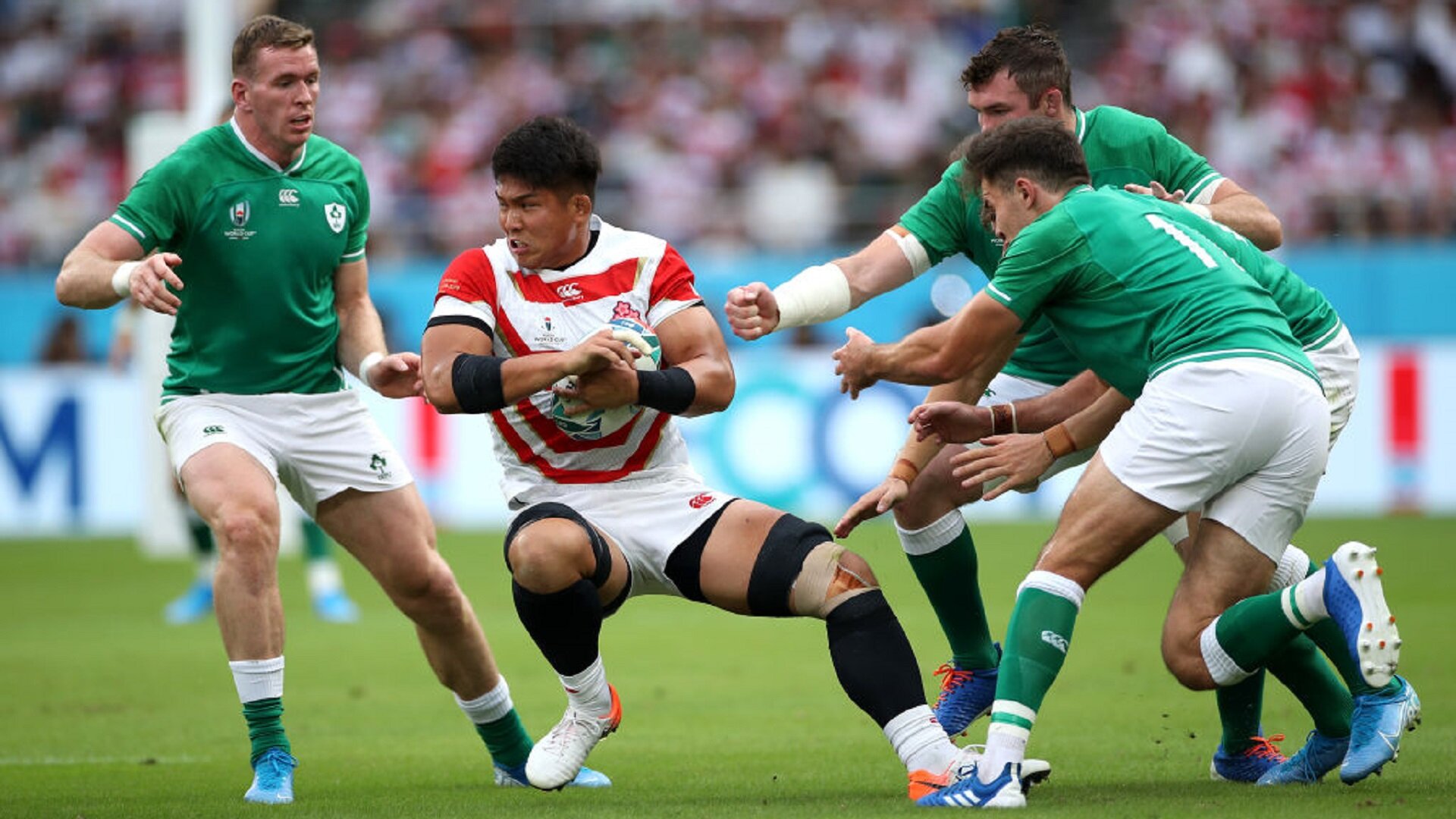Historic upset win sees Kazuki Himeno establish himself as Japan's beating heart

Despite being part of a back row that also plays host to the talismanic Michael Leitch, the physical Lappies Labuschagné and the ultra-dynamic Amanaki Mafi, Kazuki Himeno has further distinguished himself as the beating heart of Japanese rugby, both now and in the future.
The 25-year-old was indispensable in the Brave Blossoms’ historic 19-12 win over Ireland in Shizuoka, a result which gives Japan complete control of Pool A ahead of games against Samoa and Scotland in the coming weeks.
The versatile forward has benefitted from his experiences in Super Rugby with the Sunwolves and the balance to his game showed up against Ireland in a performance that can fairly be described as Herculean.
The amount of work he got through in attack and defence was colossal and it wasn’t purely in the numbers of his contributions, which saw him tally 15 carries, more than anyone else in the Japan team, but it was the physicality with which he did so. The battle on the gain line is one that Ireland would have expected to win, especially following the tight display against Scotland, but Himeno was vital in ensuring the pendulum swung in Japan’s favour.
It wasn’t just with his power that he excelled, his footwork prior to contact and leg drive in the contact, two areas where Ardie Savea leads world rugby’s contingent of loose forwards, were also exceptional. With Mafi leaving early with an injury, Himeno shouldered the extra attacking responsibilities with aplomb.
(Continue reading below…)
His conditioning was also on show as he emptied the tank in Shizuoka, leading the defensive line in the final quarter of the game as Ireland began to put some pressure back on to Japan. Not only was he first man up to disrupt the Irish attack, he also pilfered the breakdown when Ireland were camped close to Japan’s try line, winning a penalty which allowed Japan to move territory down the field, grab another penalty and to take their lead to seven points.
Whether he was winning the physical battle and getting Japan on to the front foot, slowing down Irish ball at the contact area or spearheading his side’s defence two or three men out from the breakdown, Himeno was a gargantuan for the Blossoms, very much filling the boots that Leitch occupied in Brighton back in 2015.
With both Leitch and Labuschagné 30 years of age and Mafi still 29, there is no urgency for regeneration in the Japanese loose forwards, although all three players will be at veteran ages at the 2023 Rugby World Cup in France where they may or may not have suffered a physical decline. That physicality is key for Japan, too, with a tight five that often suits a more mobile game plan and the back row help bring valuable balance to the side.
Ireland promised after 2015 they would not be caught winging it at the 2019 RWC with an inexperienced out-half starting at No10 in a big match in place of Johnny Sexton, but they have not delivered on that aim https://t.co/Y2QThUAiJW
— RugbyPass (@RugbyPass) September 27, 2019
Throw into the mix that Mafi has a colourful past off the pitch and the increasing number of early international retirements, particularly among tier two nations in order for players to keep their club careers alive, and the unit could have a significantly new complexion in four years’ time. In that scenario, Himeno is the vital bridge from this impressive group to the equally impressive crop of youngsters coming through at the position.
Among that group of budding youngsters are Tevita Tatafu and Shota Fukui, two recent star turns from the Japan U20 side. Tatafu, a bullocking No8, could well develop into a player who can replace the dynamism and front foot ball that Mafi delivers so effectively, whilst Fukui is the current ‘wonderkid’ of Japanese rugby.
Fukui has captained the Japan under-20 side for the past two years and has eschewed the traditional amateur university pathway, instead going straight into a professional contract with Panasonic Wild Knights after leaving school. He already boasts a technical and physical skill set that most tier one nations would highly covet.
Absolutely incredible from the home nation. #RWC2019 #rugbyworldcup2019 #JPNvsIRL pic.twitter.com/oEg6bV71au
— RugbyPass (@RugbyPass) September 28, 2019
As that duo are phased into more regular action during the next World Cup cycle, Himeno’s stabilising presence is going to be vital. Fukui is a natural fit at openside alongside Himeno, while Tatafu fills in at No8 in what looks like a group that could torment plenty more tier one nations over the coming years.
Fukui is a player that looks like a Japanese captain in the making, although Himeno has shown his credentials for the role moving forward, too.
Whatever way Jamie Joseph goes with the captaincy, Himeno’s value, as a player four or five years younger than the rest of his back row contingent, will be priceless in helping Joseph’s side transition to the new generation and evolve as Japanese rugby looks to grow from the legacy that this Rugby World Cup will hopefully leave on the country.
WATCH: Gregor Townsend sets the scene ahead of Scotland’s game with Samoa on Monday

























